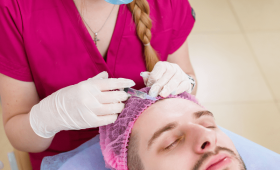What Are The Hair Transplant Costs In Turkey?
Hair transplant costs in Turkey can vary significantly depending on the patient’s needs, the chosen technique, and the planned number of grafts. Generally, prices are offered within a package system, and these packages cover not only the surgical procedure but also accommodation, transfers, and post-operative medications/care products. This comprehensive approach makes Turkey a much more economical option compared to many countries in Europe and North America. However, instead of focusing solely on the low price, you must definitely consider the clinic’s experience and the quality of service it offers to ensure the best possible outcome for your investment in your appearance and well-being.
Why Are Prices More Affordable Compared To European Countries?
The main reason why hair transplant prices in Turkey are more affordable than in European countries and the US is the reflection of the general cost of living and the difference in exchange rates. The costs that make up the operation’s expense, such as rent, personnel salaries, and operational overhead, are lower compared to Western countries. Furthermore, investments in health tourism in Turkey and the high competition in this sector ensure that prices remain attractive. This economic advantage does not imply a compromise on quality; on the contrary, Turkish clinics operate with experienced teams, offering services that meet international standards. This situation provides a significant opportunity for patients traveling from abroad to save money while receiving premium care.
What Are The Key Factors Determining Hair Transplant Prices?
The most important factors determining the hair transplant price are primarily the technique used (e.g., FUE, DHI, Sapphire), the number of grafts to be transplanted, and the experience of the team performing the procedure. The need for more grafts naturally prolongs the operation time and increases the cost. More meticulous and time-consuming techniques like DHI are generally priced slightly higher than FUE. Additionally, the content of the package is crucial; extra services such as VIP transfer, luxury accommodation, and special care kits lead to changes in the total price. Therefore, when comparing offers, it is critical to ask exactly what the package includes to avoid any surprises.
What Is The Price Difference Between FUE Technique And DHI Technique?
Generally, the DHI (Direct Hair Implantation) technique is positioned in a higher price range compared to the FUE (Follicular Unit Extraction) technique. The main reason for this is that the DHI technique is performed using a special device called the Choi pen. This pen performs both canal opening and graft placement in a single step, requiring more precision, expertise, and a longer operation time. FUE is a relatively more standard procedure and is often preferred for transplanting larger areas, while DHI is ideal for tighter, denser areas and planting among existing hair, and these specialized features are reflected in its cost.
How Does The Number Of Grafts To Be Transplanted Affect The Cost?
The number of grafts to be transplanted is the most direct and crucial factor affecting the hair transplant cost. Although clinics often offer fixed-price packages that include a certain maximum number of grafts, pricing may change when a very large area needs transplantation or when the capacity of the donor area is limited. A single graft may contain 1 to 4 hair strands. The more grafts needed, the longer the operation lasts, the more personnel are required, and the more materials are consumed, all of which increase the total cost. For accurate pricing, it is essential for an experienced specialist to conduct your hair analysis and determine a clear graft requirement tailored specifically to your needs.
What Is The Maximum Number Of Grafts That Can Be Transplanted In A Single Session?
The maximum number of grafts that can be transplanted in a single session is primarily limited by the health and density of your donor area. On average, between 3000 and 5000 grafts can be transplanted in one major session. However, this number is not always tied to the maximum number the patient requires but rather the safe limit from which hair roots can be extracted without causing damage. Overuse of the donor area can lead to future thinning and an unnatural look. Therefore, a quality center always prioritizes the patient’s health and aesthetic integrity when determining a realistic and sustainable number for transplantation.
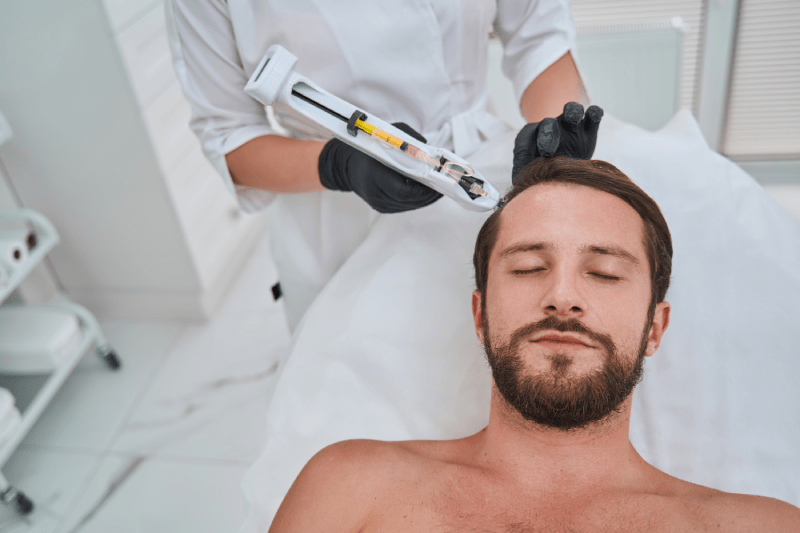
What Does The Package Price System Cover?
The hair transplant package price system in Turkey is an all-inclusive service model that generally covers much more than just the surgical operation. A typical package includes the surgical operation fee regardless of the maximum number of grafts to be transplanted, pre-operative blood tests, local anesthesia applied during the procedure, and the first medications, special shampoos, and lotions to be used post-procedure. For international patients, it may also include airport transfers in cities like Istanbul, Izmir, or Antalya, and usually 2-3 nights of luxury accommodation. This comprehensiveness ensures patients do not experience additional expenses or organizational stress during their medical journey.
Does The Package Content Include Accommodation And Transfers?
In most leading clinics serving international patients and operating in the hair transplant tourism sector, accommodation and transfer services are included as standard package content. Being greeted by VIP vehicles upon arrival at the airport and transferred to the hospital/hotel is a fundamental service for the smooth progression of the process. Accommodation usually covers a 2-3 night stay in contracted hotels (mostly 4 or 5 stars). These details aim to allow patients to focus solely on their treatment, without having to worry about logistics such as accommodation and transportation before arriving in Turkey. For package details, you must confirm by consulting professional advisors like Cure Holiday.
Are Pre-Hair Transplant Tests Included In The Fee?
Mandatory blood tests and medical analyses required before a hair transplant are generally included in the package price offered by most clinics in Turkey. These tests are conducted to check the patient’s overall health status, particularly for conditions that might pose a risk to the operation, such as contagious diseases (Hepatitis B, C, HIV) and blood clotting times. The inclusion of these tests in the price ensures that the patient does not incur additional laboratory costs and is one of the first and most important steps taken to ensure the operation is performed safely and effectively under clinical supervision.
What About Medications And Care Products To Be Used Post-Procedure?
Medications and special care products, which are vital for the success of the post-operative recovery process, are usually included in the hair transplant package. These products consist of the first washing lotion, special shampoo, antibiotics, painkillers, and anti-swelling medication to be used immediately after the procedure. After the first wash performed at the clinic, the patient is given detailed instructions on how and for how long to use these products. This inclusive service saves patients the trouble of searching for essential supplies during the recovery period and ensures they use the correct products as prescribed by the specialists.
Is There An Extra Charge For Post-Hair Transplant Check-Ups?
Routine post-hair transplant check-ups are generally considered an integral part of the package and are not subject to an extra charge. These controls cover the initial washing and bandaging done during your stay in Turkey, as well as online consultation services in the months after you return to your country. Experienced clinics regularly follow up with patients at critical periods like 6 months and 1 year to monitor their results and provide necessary advice. This long-term follow-up provides a great assurance towards guaranteeing the success and quality of the transplant results.
Is A Guarantee Provided For The Hair Transplant Price?
A “guarantee” provided for a hair transplant is generally a commitment that a certain percentage of the transplanted hair roots will grow, but this commitment should not be interpreted as a one hundred percent guarantee of success. Most high-quality centers strive for a large percentage (e.g., 90%+) of the transplanted grafts to grow permanently. The guarantee is usually an indication of confidence in the team’s experience and clinical standards. If the expected results are not achieved, a discounted or free offer for a revision session may be provided. However, since the details of the guarantee (what it covers and excludes) vary by clinic, it is important to carefully examine the contract.
Which City Is The Most Suitable For Hair Transplant In Turkey?
The most popular and suitable cities for hair transplants in Turkey are Istanbul, Ankara, and Izmir, but each city has its unique advantages. Istanbul stands out for having the largest number of internationally accredited clinics and the widest experienced teams. Izmir is known as a quieter city where you can explore the beauties of the Aegean. When choosing a city, it is best to look not only at the cost and clinic density but also at the quality of the package offered, the experience of the team, and the level of comfort provided to you. An intermediary like Cure Holiday will assist you in finding the city and center that best suits your specific needs.
Does The Hair Transplant Cost Reflect The Quality?
The hair transplant cost usually reflects the quality and scope of the service provided, but this is not always an absolute rule. Very high prices do not always guarantee the best results, just as extremely low prices can often imply low-quality materials, inexperienced teams, or incomplete package services. A quality service involves an experienced surgical team, a sterile environment, and the use of the most current technology (Sapphire, Percutaneous) utilization, and these features naturally come at a cost. Therefore, adopting the safest approach means choosing centers within the average price range that offer transparency and have good references.
Are Low-Priced Offers Risky?
Extremely low-priced hair transplant offers that fall far below the market average generally carry some degree of risk. These offers may indicate poor quality consumables, a team with insufficient experience, or a package that includes only very basic services. Especially when dealing with a surgical procedure, hygiene conditions, proper anesthesia administration, and expertise are of vital importance. A low-cost unsuccessful transplant can lead to both financial loss and permanent damage to the donor area. Therefore, while evaluating the price advantage, you should always check the standards and reliability of the service being offered.
Which Season Is More Advantageous For Hair Transplant?
In reality, any season is suitable for a hair transplant, but there are some extra factors to consider during the summer months. Sun exposure and excessive sweating can negatively affect the healing process, so wearing a hat and avoiding direct sun exposure is more crucial in summer. Spring and autumn are generally considered more comfortable because the weather is mild and the patient can wear more comfortable clothing. The choice of season depends entirely on personal preferences and the time available for taking time off from work/social life; the important thing is to strictly follow your doctor’s advice in any season.
Do Additional Hair Treatments (PRP, Mesotherapy) Increase The Cost?
Yes, additional hair treatments such as PRP (Platelet-Rich Plasma) and Mesotherapy may increase the cost if they are not included in the hair transplant package. However, many quality clinics prefer to include these treatments in the standard package to increase the survival rate of the transplanted follicles and strengthen existing hair. These treatments are usually applied in sessions immediately after the operation and in the following months. When reviewing the package content, checking whether the cost of such supportive treatments is calculated separately will prevent you from facing surprising additional payments during your treatment journey.
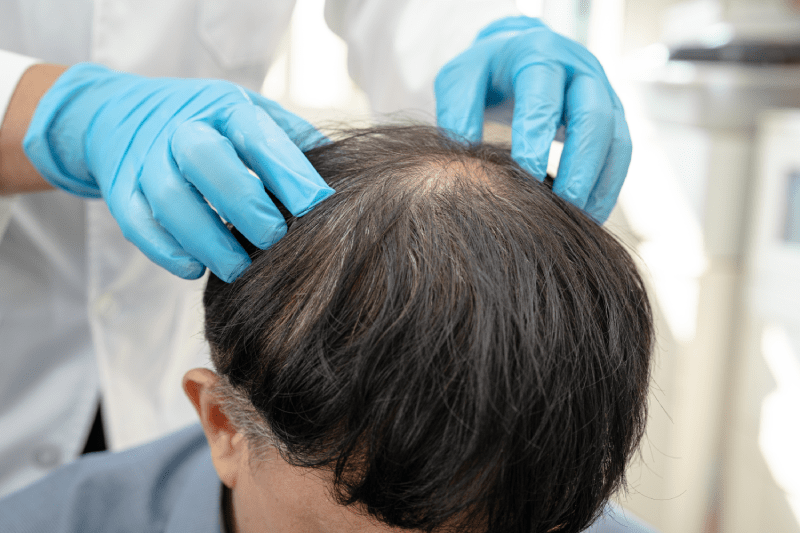
How Does The Pricing Per Graft System Work?
The pricing per graft system is a model where the clinic calculates the total cost based on a unit price. In this model, an expert must first perform a hair analysis and accurately determine how many grafts need to be transplanted. For example, if the price for 1 graft is set at 1 Euro and 4000 grafts are to be transplanted, the cost of the surgical procedure alone will be 4000 Euros. This system offers transparency, especially for those who need small area transplants or who want to know the exact price/graft ratio. However, since most Turkish clinics offer package prices including maximum grafts to international patients, pricing per graft is less common.
Can The Initially Determined Price Change?
If you are working with a professional and reliable clinic, there should not be any surprising changes to the initial package price offered to you. Pricing is generally finalized after all details (graft number, technique, accommodation, transfer) have been determined and agreed upon. However, rarely, if the condition of the person’s donor area or an additional medical condition is revealed during pre-operative blood tests, an extra measure that might affect the cost may be necessary. Except for such unexpected situations, the package price accepted by the patient is expected to remain valid until the day of the operation.
How Much Budget Should Be Allocated On Average For Hair Transplant?
The average budget you should allocate for a quality, all-inclusive hair transplant package in Turkey, while varying based on the scope of the package you choose, is generally around one-third or one-quarter of the prices in Europe and the US. This budget covers not only the surgical procedure but also fundamental services like an experienced team, modern techniques, accommodation, and transfers. The average budget range helps you find clinics that offer the best price/performance balance, along with the assurance, experienced personnel, and comprehensive auxiliary services you need for a successful outcome.
What Is The Importance Of The Technology Used In Hair Transplant?
The importance of the technology used in hair transplant is immense, as it directly affects the naturalness and quality of the result obtained. For example, using the Sapphire FUE technique instead of traditional FUE means that the canals where the grafts will be placed are opened with more precise and sharp-tipped Sapphire blades. This ensures less tissue trauma and results in a denser and more natural appearance. Similarly, the DHI technique uses special Choi implanter pens. Learning which technologies are used in the clinic and whether these technologies incur additional costs is crucial for getting the best return on your investment.
Are There Special Packages For Patients Coming From Abroad?
Yes, many leading hair transplant centers in Turkey offer comprehensive “health tourism” packages specially designed for patients coming from abroad. These packages are structured to best meet the travel and accommodation needs of international patients. Packages typically include services such as VIP transfer after the flight, accommodation in 4 or 5-star hotels, all medical expenses, medications, care products, and sometimes even local city tours. These special packages aim to eliminate the logistical worries that patients might experience in a foreign country, allowing them to focus entirely on their treatment and recovery.
Is The Anesthesia Fee Included During The Hair Transplant?
Local anesthesia or the increasingly popular needle-free anesthesia methods applied during the hair transplant procedure are generally a standard and mandatory part of all hair transplant packages. Anesthesia is critical to ensure the patient does not feel pain or discomfort during the procedure. Therefore, it is rare for a separate fee to be charged for anesthesia, as it is included within the package content. If you request a special method that increases comfort, such as needle-free anesthesia, you must confirm whether it is included in the package price or if it incurs an additional cost beforehand.
How Is The Cost Calculated If A Second Session Is Necessary?
Whether a second session is necessary is usually confirmed within 12 to 18 months after the initial transplant. If the second session is required due to the failure of the first procedure and falls under the clinic’s guarantee, it can often be offered free of charge or at a discount. However, if the patient requests a second session because they desire more density or want to transplant to a different area (crown, beard), this is treated as a new operation, and a new cost is calculated based on the current package price at that time. It is important to clarify the clinic’s policy regarding revision or a second session for every scenario.
Are Beard Or Eyebrow Transplant Prices The Same As Hair Transplant?
No, beard or eyebrow transplant prices are generally not the same as hair transplant prices and are priced differently. The main reason is that the number of grafts in beard and eyebrow transplants is much less than in hair transplants, but the procedure requires more precision and artistic skill. Procedures like eyebrow transplantation require finer craftsmanship to maintain the natural angle and direction of the hair. Therefore, prices are often determined as a package based on the complexity of the procedure and the required level of expertise, rather than strictly depending on the graft count.
What Should I Pay Attention To When Receiving A Price Quote?
When receiving a price quote, you should focus not only on the final figure but also on the transparency and scope of the offer. You must clarify that the quote includes the committed number of grafts, the hair transplant technique to be used (FUE, DHI, or Sapphire), accommodation details, and the number of nights of stay. Additionally, it is essential to ask whether post-operative medications, special shampoos, and the initial washing service are included. An offer that contains no hidden costs (e.g., anesthesia, blood tests) and is supported by a written contract is the first sign of reliability and professionalism.
What Are The Success Rates Of Hair Transplants In Turkey?
In centers in Turkey that specialize in and have experienced teams in the field of hair transplantation, the success rates are quite high and above international averages. Success is generally defined as the growth of more than 90 percent of the transplanted hair follicles permanently and the achievement of a natural-looking result. This high rate is attributed to the Turkish teams’ extensive experience, the use of the latest technology equipment, and strict hygiene standards. It is important to remember that correct patient selection before the operation and careful post-operative care also directly influence this high success rate.
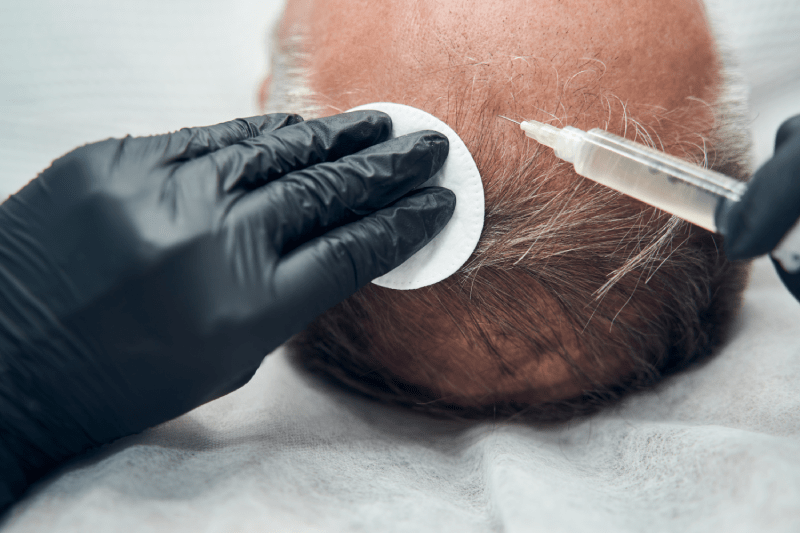
What Additional Expenses Might Be Encountered During The Post-Hair Transplant Process?
Additional expenses you might encounter during the post-hair transplant process are generally limited to personal expenditures not included in your package. These may include personal shopping within Turkey, extra food and drink expenses not covered by your package, and additional vitamins or special hair strengthening supplements you may decide to use post-operation. Since routine check-ups and consultation services are included in the package, major medical additional costs are not expected. However, if you choose to extend your stay, extra accommodation costs will also be factored into your budget.
How Long Does The Hair Transplant Operation Take?
The duration of the hair transplant surgery primarily depends on the number of grafts to be transplanted and the technique used. The average operation time for 3000 to 4000 grafts can generally take between 6 to 8 hours. This duration includes the application of anesthesia, the individual extraction of grafts, the opening of canals (or direct implantation in DHI), and the placement of the grafts. Because the length of the operation can be tiring for patients, experienced clinics manage the process by providing breaks to ensure the patient’s comfort and maintaining the quality of the operation without rushing.
What Are The Advantages Of Getting A Hair Transplant In Turkey?
The biggest advantages of getting a hair transplant in Turkey are cost-effectiveness, high level of expertise, and comprehensive service packages. Turkish clinics offer world-class surgical service at much more competitive prices compared to Western countries. Furthermore, the experience gained by Turkish teams through performing thousands of operations in this field is unrivaled globally. All-inclusive packages cover logistical needs like accommodation and transfer, which makes the process very easy for patients. This triple advantage has made Turkey a global leader for hair transplantation procedures.
When Do The Hair Transplant Results Start To Become Visible?
Hair transplant results are a process that requires patience, and results are not immediately visible. The transplanted hairs will shed within the first few weeks (shock loss), which is a normal part of the process. New hair typically begins to grow slowly from the third month onwards. A significant difference is usually noticed at the sixth month, but the final result, where 80-90 percent of the transplanted hairs have grown out, is generally achieved between 9 to 12 months. The complete maturation, thickening, and final shape of the hair can take up to 18 months. Regular communication with your clinic throughout this period is beneficial.
Is There An Age Limit For Hair Transplant?
While there is no definite upper age limit for hair transplantation, the lower age limit is generally recommended to be between 20 and 25 years old, where hair loss has fully stabilized. Transplants performed during adolescence or at very early ages may lead to new balding areas if the hair loss continues later, resulting in an unnatural appearance. For the upper age limit, the patient’s general health status and the presence of any chronic illness are primarily evaluated. Hair transplant can be performed on anyone who is healthy, without chronic illnesses, and possesses a healthy donor area.
How Long Is The Return To Work Period After Hair Transplant?
The return to work period after a hair transplant varies depending on the type of job and the individual’s healing speed. Patients working in a desk job can usually return to work within 2 to 5 days after the operation. This period, scabs may be noticeable, so the comfort of returning to social life varies from person to person. Those working in jobs requiring heavy physical activity or causing profuse sweating are advised to wait for at least 10-14 days to prevent damage to the transplanted follicles. Following the doctor’s instructions during the recovery period will accelerate the process.
How To Choose A Quality Hair Transplant Center?
When choosing a quality hair transplant center, you should focus on four main elements, not just the price. First, check if the center has international accreditations. Second, research the experience of the team performing the procedure and their references. Third, inquire about the currency of the technologies used (Sapphire, DHI) and their sterilization standards. Finally, evaluate the transparency of the service package offered by the center and the quality of the post-operative follow-up services. A center that offers these four elements combined is highly likely to provide quality results and a positive experience.
What Type Of Anesthesia Is Applied During Hair Transplant?
Local anesthesia is applied during hair transplant operations to ensure the patient’s comfort. Local anesthesia ensures that only the donor and transplantation areas are numbed, allowing the patient to remain awake during the procedure but without feeling any pain. In recent years, needle-free anesthesia methods have gained popularity for patients with needle phobia. This method is based on the principle of injecting the drug into the skin using pressure, providing a virtually painless start. This method, administered by an anesthesiologist, is one of the most critical and comfortable stages of the entire hair transplantation process.
How And When Is The First Wash Done After Hair Transplant?
The first wash after a hair transplant is usually performed 48 to 72 hours after the operation at the clinic, personally by specialists or experienced nurses. This wash is vital for softening the scabs and gently cleaning the area without damaging the transplanted grafts. A special lotion and shampoo are used, and the transplantation area is strictly not touched with fingernails or pressure during the wash. Having the first wash done at the clinic provides great assurance for the patient to learn the correct technique and protect the newly implanted roots, thus initiating the healing process correctly.
Are Transplanted Hairs Permanent And How Long Do They Last?
The transplanted hairs are generally permanent and are expected to last a lifetime. This is because the grafts used in hair transplantation are taken from the nape area between the two ears (the donor area), which is genetically resistant to shedding. These follicles retain their non-shedding characteristics even when they are relocated to a new site. In a successful operation, the transplanted hairs, once grown, continue to grow permanently. This permanence is the fundamental biological feature that makes hair transplantation the most effective and long-term solution for hair loss problems.
Is Hair Transplant Only A Solution For Baldness?
No, hair transplant is not only a solution for baldness but can also be applied for various aesthetic and medical conditions. For example, hair transplant can be performed to cover sparse areas resulting from scars, burns, or previous unsuccessful operations. Furthermore, it can be chosen to lower the hairline if it is naturally high, or simply to increase hair density in thinning areas. Beard, mustache, or eyebrow transplantation are also different application areas performed with the same techniques, directly improving the patient’s aesthetic appearance.
What Is The Travel Duration To Turkey For Hair Transplant?
The minimum travel duration to Turkey for a hair transplant is usually planned as three days, two nights. This period covers arrival, consultation, and operation on the first day; rest and check-up on the second day; and the first wash and return to your country on the third day. However, four days, three nights is often recommended for patients to have a more comfortable recovery and to overcome travel fatigue. Packages are usually organized to cover this duration, but you can always choose to stay longer for your personal comfort.
Is Pain Felt During The Hair Transplant Operation?
Pain or discomfort is not expected during the hair transplant operation. The local anesthesia applied at the beginning of the operation ensures that both the donor and transplantation areas are completely numbed throughout the entire procedure. As long as the anesthesia is effective, the patient may only feel touch and pressure. In some sensitive individuals, a slight stinging might be felt during the first few seconds when the anesthesia needles are applied, but needle-free anesthesia methods are used to minimize even this initial discomfort. A slight soreness may occur post-procedure, but this is easily controlled with simple painkillers.
Does Scarring Occur After Hair Transplant?
Modern hair transplant techniques (especially FUE and DHI) do not leave large, visible scars on the scalp. Since grafts are extracted individually in the FUE technique, pin-sized, dot-shaped marks occur in the donor area. These marks are completely concealed when the hair grows out and are not noticeable from the outside. The long, horizontal suture scar seen in the older FUT technique has been completely eliminated with today’s FUE methods. After a successful and meticulous FUE operation, scars are minimal and usually too small to be noticed even by the patient.
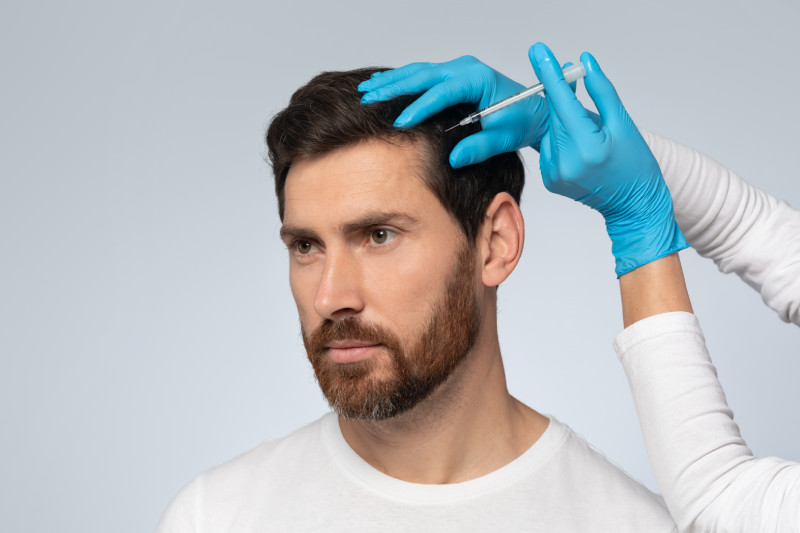
How Should I Prepare Before Hair Transplant?
Before a hair transplant, there are important preparations to ensure a successful operation and a smooth recovery. One week before the procedure, smoking, alcohol, and blood-thinning medications (like aspirin) should not be used. You may also need to temporarily stop supplements such as Vitamin E and Vitamin B. On the day of the operation, you should arrive with your hair washed and choose comfortable, button-up or zippered clothing so you don’t damage the transplanted area when changing. These simple preparations set the stage for a comfortable and successful operation.
Which Medical Conditions Pose A Barrier To Hair Transplant?
Hair transplant may pose a temporary or permanent barrier for certain chronic or uncontrolled medical conditions. Uncontrolled high blood pressure, diabetes, serious heart diseases, blood clotting disorders, and active contagious diseases (HIV, Hepatitis C) must be thoroughly evaluated before the operation. In such cases, the approval of the relevant specialist and control of the disease are mandatory. Furthermore, transplantation may not be suitable for individuals whose donor area lacks sufficient density or health. Comprehensive blood tests performed before the procedure play a critical role in identifying these risks.
When Can I Start Exercising After Hair Transplant?
The time to start exercising after a hair transplant varies according to the intensity of the activity. Light exercises like walking can usually be started within one week after the operation. However, strenuous activities such as heavy lifting, running, swimming, or intense sports that cause sweating should be avoided for at least 14 days. Excessive sweating can increase the risk of infection in the transplanted area, and increased blood pressure can lead to bleeding. Especially contact sports with a risk of head trauma (football, basketball) should be avoided for about a month until complete healing is achieved.
When Can Hair Be Cut After Hair Transplant?
You should not rush to cut the hair in the transplanted area. It is very important not to touch the transplantation area with scissors or clippers for the first month after the operation. Generally, trimming with scissors can be done approximately one month after the operation. However, it is recommended to wait six months before shaving or trimming the transplanted area with clippers to zero. Although the donor area heals faster, it is safest to avoid clippers for about a month until the sensitivity has completely passed.
Where Can I Get Detailed Information About All These Processes?
To receive transparent, reliable, and personalized information about the hair transplant process, costs, the most suitable techniques, and the best package options in Turkey, you should contact Cure Holiday. Their expert consultants will perform a personalized hair analysis to determine the number of grafts you need and offer all-inclusive package options, including accommodation and transfers, prepared with different techniques based on this number. With the assurance of Cure Holiday, you can find answers to all your questions, plan the process, and confidently carry out your operation. Contact them immediately to start your journey.
Is Credit Card Installment Option Available For Hair Transplant?
Credit card installment options for paying the hair transplant service cost may vary depending on the clinic’s agreements with banks and the banking system in the patient’s home country. While some large clinics in Turkey may offer installment options for local credit cards, for patients coming from abroad, this usually depends on the health loan or installment payment options of their banks. Consulting with your clinic or intermediary institutions like Cure Holiday beforehand regarding payment options is the most appropriate approach to establish the plan that best suits your budget.
Why Do Hair Transplant Costs Change Constantly?
There are several important reasons why hair transplant costs are constantly changing. The main reasons are fluctuations in exchange rates in Turkey, the renewal of technologies used (e.g., the spread of Sapphire FUE), and global price changes in the consumables that make up the operation’s cost. Furthermore, the increase in demand for health tourism and general inflation rates are also factors affecting prices. Therefore, when you receive a price quote, you must definitely ask how long the quote is valid for and make a transparent agreement on this matter to lock in your quoted rate.
What Should I Do With My Hair Before The Hair Transplant Operation?
Before the hair transplant operation, your hair generally needs to be shaved by your clinic, but this will be done at the clinic just before the operation. Patients are expected to wash their hair thoroughly the night before the operation and not use any hair styling products, sprays, or gels. Unless your doctor gives different instructions, do not attempt to cut your hair short yourself. The expert team at the clinic will prepare the donor and transplantation areas in the most appropriate way to achieve the best result. It will suffice to arrive with clean and natural hair.
Should I Use A Special Shampoo Before Hair Transplant?
It is generally not mandatory to use a special shampoo immediately before the hair transplant operation, but it is important to wash your hair thoroughly with a normal, chemical-free shampoo the day before the operation. Some clinics may recommend a special antiseptic shampoo for you to use a few days before or on the morning of the operation. This is done to help ensure the scalp’s sterilization. The important thing is that no products like conditioner, gel, or spray have been applied to your hair immediately before the procedure. Otherwise, these product residues could negatively affect the quality of the operation and the adherence of the new grafts.


